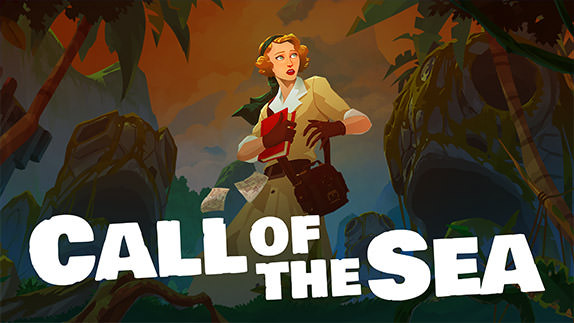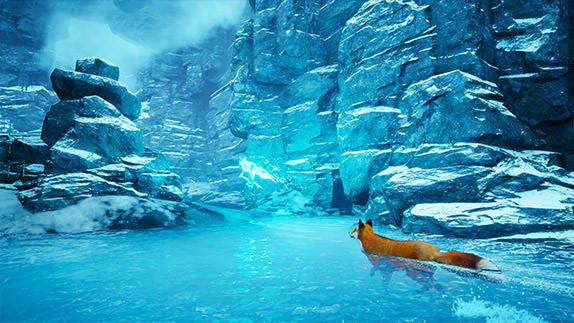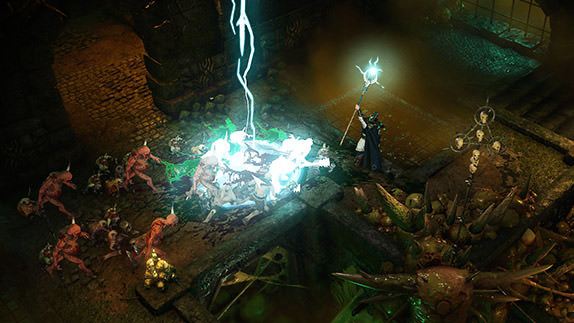Disgaea 2: Cursed Memories Review
Most gaming companies can trace back the first breakout title that turned them into videogame household names; Sega has Sonic the Hedgehog to attribute to their presence in the 90’s, Half-Life helped shape Valve into one of the top PC developers, and even Squaresoft wouldn’t exist today as Square Enix were it not for the breakout success ofFinal Fantasy.
Released in 2003 for the Playstation 2 (and published in North America by Atlus), Disgaea: Hour of Darkness paved the way for Nippon Ichi Software’s success in the West, eventually giving the company enough clout to self-publish their games and merchandise overseas (under NIS America). Taking the familiar Strategy RPG mechanics from Final Fantasy Tacticsand Tactics Ogre, Disgaea brought several new innovations to the genre, including an eye-catching anime aesthetic featuring demonic party members and ludicrous abilities (which can be leveled up far beyond the Level 99 cap typically associated with similar games of the genre), as well as additional content that made up for hundreds of hours of gameplay even after the main story was finished.
Even as NIS continued to dabble with other titles featuring similar gameplay and visual aesthetics, it was only a matter of time before a proper sequel to Disgaea was released. That day finally came in 2006 with the PS2 release of Disgaea 2: Cursed Memories. The direct sequel saw a return to the original game’s tile-based gameplay and demonic denizens (though with significant revisions to both), and paved the way for further sequels and spin-offs for the series. Now re-released as a PSN download, how does Disgaea 2 hold up as a middle entry in the currently-running series?
Set in the same world as the original Disgaea (but with a mostly new cast of characters), the human village of Veldime has been affected by a curse placed by Overlord Zenon fifteen years prior, turning all of the residents into demons. As the sole human not affected by the curse, young demon hunter Adell sets out to defeat Zenon and break the curse before his family becomes completely transformed in both mind and body. What was supposed to be a summoning ritual to bring the Overlord to their doorstep backfires, however, instead summoning his daughter Rozalin, a pampered princess who demands she be returned to her castle (even if she has no idea where that may be, having never ventured outside its walls). With princess in tow and his determination set, Adell embarks on his quest to break his family’s curse, though the road ahead is filled with many twists and turns as well as wacky demons, both allies and enemies ( sometimes both).
From a story perspective, Disgaea 2 is a real disappointment compared to its predecessor. The original Disgaea featured a demonic protagonist who cared only about fulfilling his own goals of world conquest, resulting in a unique and often hilarious parody of classic RPGs. Disgaea 2, on the other hand, decides to play it straight…often painfully so. Main hero Adell is such a tired cliché of an RPG protagonist that you would expect the game to parody his stubbornness to face every challenge no matter how impossible, his cheesy bravado about always keeping promises and defending the weak from harm, or even his total dislike of women. While berating him early on for these very actions, Rozalin soon becomes a cliché herself, as she finds herself overtaken by Adell’s reckless-yet-earnest bravery while questioning her own relationship with her father. None of the other characters are particularly memorable, save for a bi-polar perverted frog with a French accent, and most of the memorable leads from the first Disgaea are reduced to minor roles at best.
Fortunately, the gameplay carries the same polish and variety that has become a series staple at this point; party members are placed on a field to do battle with enemies, both sides each taking a turn to move within their individual spaces (represented by colored tiles) and one action, whether it be attacking, defending, using an item or special move. Offensive party members may receive support from adjacent allies (one standing directly to their left, right, and behind) resulting in a combo, and can also lift and throw one another (as well as enemies) across the map.
That may be the gist of it, but where the game truly shines is with the numerous strategies one can take by exploiting virtually every single facet of the battle system. One of the most crucial involves the ability to cancel commands before they are executed: when a party member attacks an enemy in a group, only the attacking party member wastes a turn. The others can be placed alongside the attacker, then have their positions reset so they can move on to the next enemy (or align themselves with whoever plans to attack next). Successful placement of allies can result in numerous attacks on the enemy before giving up your turn. There are also Geo Symbols which offer an additional layer of complexity to the mix: these color-coded triangles offer various bonuses that can help or hinder players depending on which Geo Panels they are placed on: a Geo Symbol that offers a Defense boost, for example, will affect all Geo Panels of the same color, making it a priority to place units atop the corresponding panels before the enemies get a hold of them. Players can also destroy the Geo Symbols outright to nullify the effects for everyone, which can yield additional rewards with the right experimentation.
Ultimately, the entire Disgaea series is about experimenting and exploiting the simplistic mechanics, turning them into complex strategies to create all-powerful characters. Casual players can simply cruise through the main storyline and level up their demon army the “normal” way, but the real fun lies in pushing beyond those boundaries in order to slowly grind out all of the levels, equipment, character classes and super-bosses. This includes using the Dark Assembly to spend Mana Points (collected by defeating enemies) in order to appeal additional parameters, such as high level items in the shops, stronger enemies, new character classes, and so on. The vote will pass if more demon senators vote in favor of the proposal than against, though there are ways to influence their votes even further (and when you reach high enough levels, you can even appeal to a denied vote through physical violence).
But the most notable feature, and the one guaranteed to suck away hundreds of hours, is the Item World. Like in the original Disgaea, every single item you collect in the game has a bonus world inside of it that players can enter. Each world contains several floors with random levels and enemies, and players can advance to the next floor by either clearing out all the enemies or making a beeline to the portal. Leaving the world entirely can only be achieved every ten floors or by using an escape item. To call the Item World time consuming is putting it mildly, but the rewards are truly beneficial: each floor cleared levels up the parameters of the item, turning even a lowly wooden sword into a blade of death. Levels, treasure, and other bonuses earned also carry over to the outside world, making repeat visits ideal for leveling up new characters and collecting extra items.
On the technical side, it’s easy to say that Disgaea 2 holds up with its sequels, since the games all use the same assets with little improvement to the sprites or polygons. Despite this, the quirky visual style has yet to lose its charm, with a variety of cutesy character designs that appeal to almost every kind of anime fan (and perhaps even those that aren’t). The music is appropriately wacky most of the time and serious when necessary. The voice acting is also adequate, but also tends to try a bit too hard in delivery; calling the overall voice work Saturday morning cartoon affair would be redundant given the setting, but it’s still true that the actors tend to oversell their performances in trying to maintain their character roles even when the context of the dialog doesn’t match up.
Simply Put
While the sequels following Disgaea 2 have improved the gameplay even further as well as bring back some of the charm missing from the characters, it is still a solid experience that features a limitless amount of customization and additional content that is every bit as bloated as the other titles. That being said, if you happen to own a PSP or Vita, you may wish to invest in the portable release instead. Dark Hero Days, the portable version features even more additional content as well as mechanical improvements, not to mention that the hours-long grinding sessions during the Item World and other junctions make for a better fit on a handheld, especially when you can put the device to sleep at any time. Ultimately it is a matter of preference, as you will have the same quality experience in either case.
Note: Disgaea 2: Cursed Memories was reviewed on PlayStation 3. A digital copy of the game was provided by the publisher/developer.




